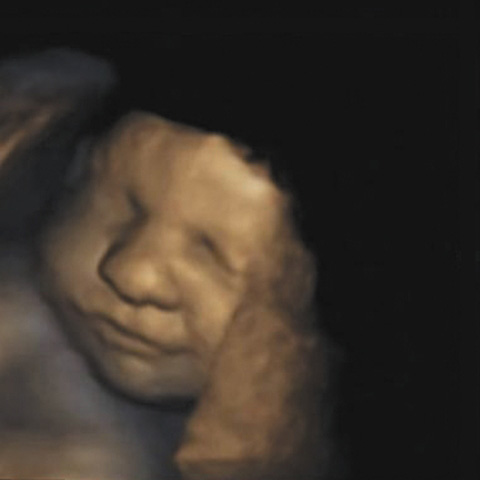Facial Expressions Develop Before Birth

Babies in the womb develop a range of facial movements in such a way that it is possible to identify facial expressions such as laughter and crying.
For the first time a group of researchers were able to show that recognisable facial expressions develop before birth and that, as the pregnancy progresses from 24 to 36 weeks gestation, fetal facial movements become more complex.
The group of researchers include Dr Nadja Reissland, a psychologist and Professor James Mason Director of Research in Medicine and Health of Durham University, Professor Brian Francis, Professor of social statistics at Lancaster University and Dr Karen Lincoln, consultant in Obstetrics and Gynaecology at the James Cook University Hospital, Middlesbrough, where the fetal scans are collected.
The group examined video-taped fetal facial movements obtained by 4D ultrasound machines in the later stages of pregnancy.
They recorded the same fetuses after they had been found to be healthy at their 20 week scan, several times between 24 and 36 weeks of gestation. They found that the movements of the fetal face become more complex over time.
Fetuses at the first stage of observation (24 weeks) were able to move one muscle in their face at a time. They would for example stretch their lips or open their mouth. By 35 weeks gestational age, fetuses combined a number of facial muscle movements, combining for example lip stretch, lowering of the eyebrows and deepening the nasolabial furrow, thereby turning isolated movements into recognisable and increasingly complex expressions.
Professor Brian Francis from the Department of Maths and Statistics at Lancaster University said: “This is a new and fascinating insight into the remarkable process of fetal development. This research has for the first time demonstrated that in healthy fetuses there is a developmental progression from simple to complex facial movements, preparing the fetus for life post birth.”
Although the fetus cannot make any sounds, the development of facial expressions means that at birth, the baby has already developed the facial movements to accompany crying and laughing.
Dr Nadja Reissland from Durham University said: “We have found so much more than we expected. We knew that the baby blinks before birth and that some research has identified scowling before birth. However in this study for the first time we have developed a method of coding and analysis which allows us to objectively trace the increasing complexity of movements over time which results in recognisable facial expressions.”
The researchers argue that these patterns of the motor movements are developed before the baby feels the emotion, just as the baby practises breathing movements in the uterus even before it has drawn a breath.
The discovery could help potentially identify health problems in utero, since there is a link between fetal behavioural patterns and the development of the fetal brain. Looking at differences between normal and abnormal fetal facial developments may indicate problems with brain development.
The researchers now plan to look at whether fetal facial movement might help differentiate between fetuses of mothers who smoke during pregnancy and non-smokers. They will also examine the development of facial expressions relating to anger, smiling and sadness.
The research paper is published in PLOS One.
http://www.plosone.org/article/info%3Adoi%2F10.1371%2Fjournal.pone.0024081